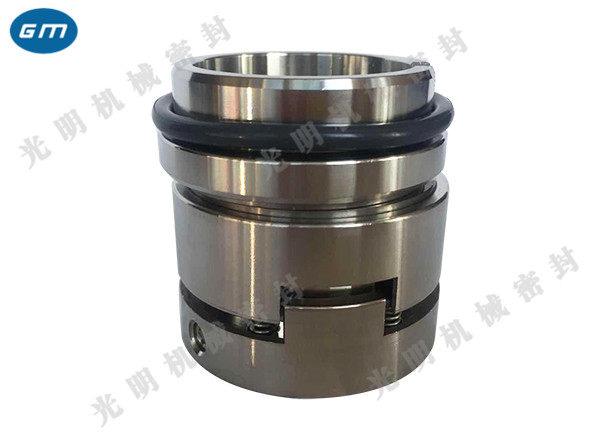Mechanical seal for kettle Cause analysis of thermal damage
Thermal damage mainly refers to overheating. It is difficult to calculate the thermal effect of mechanical seal, and it can only be designed correctly from the perspective of considering thermal influence factors, but the friction coefficient pV value and thermal conductivity, dry running performance and practical experience must be known. Thermal damage includes the following:
1) In general, under the action of excessive thermal stress, radial cracks appear on the surface of the seal ring, referred to as hot cracks. Under the action of mechanical load or thermal load for a short time, thermal cracking will occur, such as due to dry friction, interruption of cooling system, large fluctuation of sealing surface clearance, pressure and speed, etc. During hot cracking, the wear of sealing ring increases sharply, and the leakage rate increases rapidly. For balanced seals, even seal rings are separated. In order to avoid hot cracking, the mechanical and physical properties of the material must be sufficiently clear, and the operating conditions that may cause hot cracking must be taken into account in the design.

2) Blister scar Blister scar is also a phenomenon of overheating. It is mainly caused by overheating of carbon graphite, ceramics and other materials. Because the expansion coefficient of each component of heterogeneous material is different, the extrusion of binder is the cause of this damage. Therefore, different materials or external structural measures must be used to improve the heat dissipation conditions. The temperature between sealing surfaces may rise very high, even melting the impregnating agent and having adverse effect on friction.
(3) Mechanical damage - mainly abrasion. Mechanical damage also includes other forms of damage due to insufficient mechanical strength.
1) Abrasion is usually caused by solid particles invading between sealing surfaces, which first causes the soft sealing surface to wear, but sometimes the solid particles embedded in the soft sealing surface cause the hard sealing surface to be worn by solid particles
2) The erosion sealing fluid will cause erosion wear to the sealing elements. Erosion wear on the sealing surface only occurs in the heavy load seal with high pressure difference (above about 30 atmospheric pressure). Because the high pressure difference will cause the sealing surface to warp, causing the fluid to erode the sealing surface. Similarly, leakage at a very high flow rate will also wash away the binding materials (soft components) on the sealing surface.











